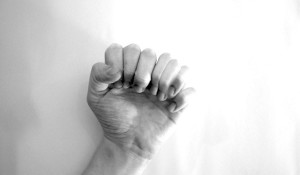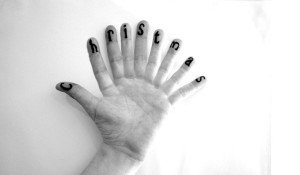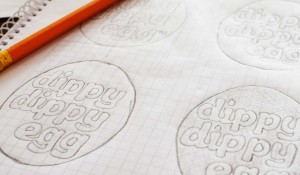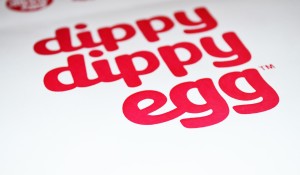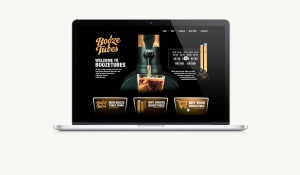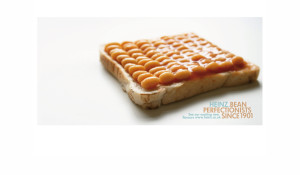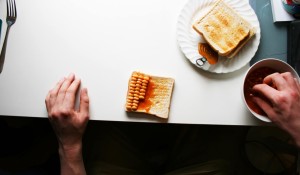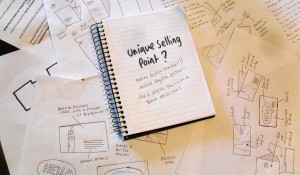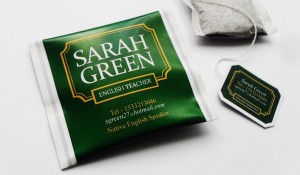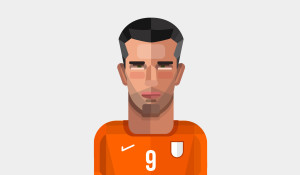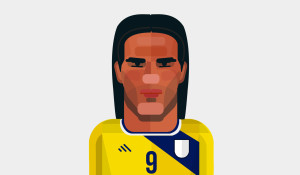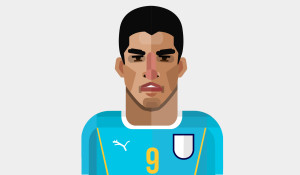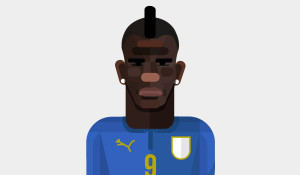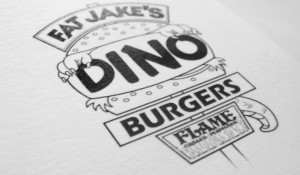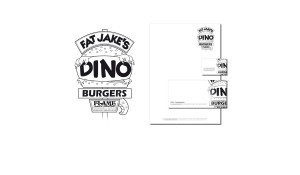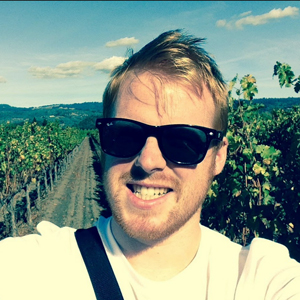 Chris Payne is a British graphic designer, art director and advertising creative living in San Francisco. He works as a Senior Designer at Silicon Valley tech company MuleSoft, sometimes does freelance projects on the side and, 3 months ago, he launched his own project, Desinion (read the interview I did earlier this week with Chris, about Desinion). Many of Chris’ freelance projects are really interesting for me, like the brand identity and hand lettering projects he works on, because that’s something I’m learning too, so I wanted to know more. So here is a detailed interview about who is Chris Payne, how he got here, how he deals with clients and how he puts all that passion on paper (well, or his computer monitor), in order to create amazing work. Hope you enjoy this interview and don’t forget to come back next Friday! 🙂
Chris Payne is a British graphic designer, art director and advertising creative living in San Francisco. He works as a Senior Designer at Silicon Valley tech company MuleSoft, sometimes does freelance projects on the side and, 3 months ago, he launched his own project, Desinion (read the interview I did earlier this week with Chris, about Desinion). Many of Chris’ freelance projects are really interesting for me, like the brand identity and hand lettering projects he works on, because that’s something I’m learning too, so I wanted to know more. So here is a detailed interview about who is Chris Payne, how he got here, how he deals with clients and how he puts all that passion on paper (well, or his computer monitor), in order to create amazing work. Hope you enjoy this interview and don’t forget to come back next Friday! 🙂
I worked in factories, I delivered things, I washed cars, I worked in restaurants. Those jobs make me appreciate that I’m the luckiest man in the world to be working in a job that is genuinely enjoyable and like a hobby.
How did you start working in this field? What was your first job?
I was always interested in how things look. I remember at school the art and the design classes were pretty much the only classes that captured my attention. I soon loved the design process, and became inspired to create nice, or clever, or useable things from nothing. It’s such an exciting thing to do – to create something from nothing or to turn a little idea or a thought in your head into something real that people react to.
I studied Art and Design at Chesterfield College (in England) and whilst studying, I obviously had to pay my way, so I went out and got a series of jobs outside the creative world, i.e. I worked in factories, I delivered things, I washed cars, I worked in restaurants etc, etc. These jobs, albeit weren’t in the creative realm, did help me a lot by installing a sense of work ethic and snapshot of what life could be like without design in my life. Although I had fun in all those jobs, and met some great people, of whom are still friends today – I wanted to be creating, and make things. Looking back today, those jobs make me appreciate that I’m the luckiest man in the world to be working in a job that is genuinely enjoyable and like a hobby. My first paid design job was self initiated, once I felt confident that my portfolio was good enough (and I worked hard on my portfolio), I went out and got some freelance clients that were in need of some design help. I created logos, websites, advertising pieces etc, etc.

I once promised a client unlimited design revs, that was a mistake – the clients chopped and changed his mind continuously, and there was nothing that i could do about it, I had to stick to my word.
You’ve been a designer for 7 years now and you have probably evolved so much since you started. What were the most obvious mistakes you made, throughout this time, on the projects you’ve worked on?
I’m scratching my head, thinking long and hard about what major mistake I have made in the past 7 years, and there isn’t a single big mistake that jumps out at me, I’m pretty happy with my path that leads to where I am now. My design skills have taken me from Derby in England, to San Francisco in California (via London, New York and Buenos Aires).
I guess we all make little mistakes and learn from them. I once promised a client unlimited design revs, that was a mistake – the client chopped and changed his mind continuously, and there was nothing that I could do about it, I had to stick to my word. Now if I have a freelance client, I don’t offer unlimited design revs.
I guess I haven’t networked as much as I probably should or could have – however that isn’t my passion – creating emotion-provoking work is; I realise that the networking part is important, as you need to get your work seen, however that’s the boring part of the job in my mind. It feels very much like administration. I’m happiest when I am knees-deep in design, listening to the radio whilst creating stuff. I do try to network a bit more now, and get my work seen and talked about, and it can be highly rewarding when you get nice compliments about your work.
I’m happiest when I am knees-deep in design, listening to the radio whilst creating stuff
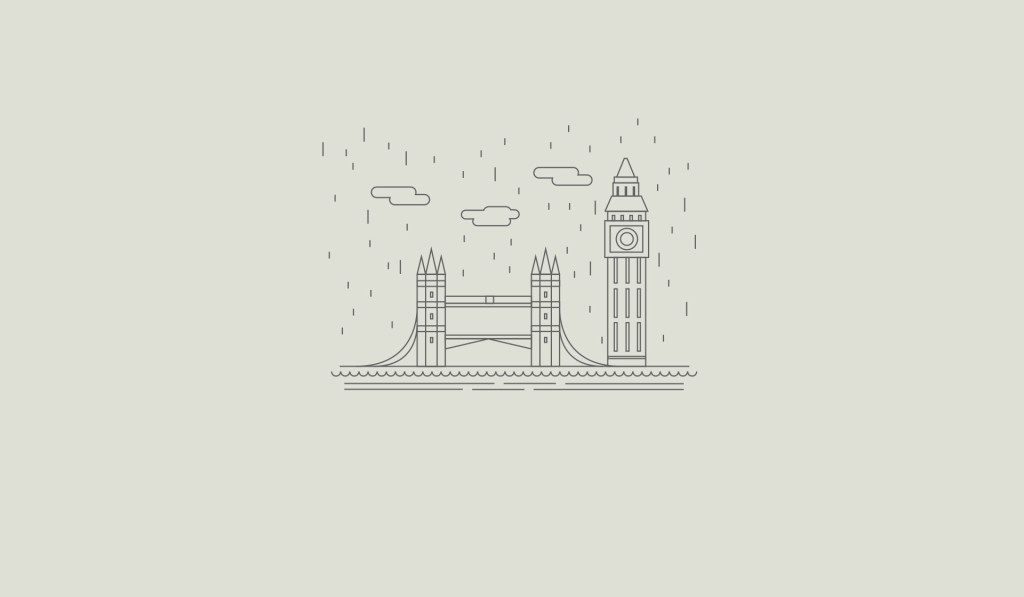
You have lived in London, Buenos Aires, New York city and now San Francisco. Where did you like it better and why? Would you say that the opportunities, in general, differ a lot from one place to the other (or continent, for that matter)?
I’ve always enjoyed travelling and seeing new places. I do believe that travelling experience and getting out there and tasting and trying new stuff can influence your creative work, as well as your personality. I’ve really enjoyed all the places that I have worked, my portfolio has certainly benefitted from me geting out there and winning clients from all over the world.
In London I was just getting started, I moved down there from my home town city of Derby. I loved the potential opportunity that was everywhere in London. It has an exciting design scene with almost all of the worlds best agencies having offices here in London.
New York City was spectacularly exciting – The advertising world really inspires me. I’m a huge fan of guerilla advertising! I love it! I was interning at MSA Advertising where I presented a creative guerilla advertising idea for one of their clients – that was a real buzz. There’s no better place to work in the field of advertising than in New York City – I’d one day like to return there.
Buenos Aires is an amazing place, full of culture, interesting things and good people. At first it was a challenge working as a designer there, as I had to learn Spanish (which I later did) and I had to learn how to present my ideas, thoughts and opinions clearly and insightfully in a foreign language. That was a big hurdle to jump, however I did it and I am glad I did. There are some extremely talented designers and illustrators in Argentina. Gustavo Zambelli and Carla Corrales are great new illustrators.
And most recently I have been working in San Francisco and I love it! There are an amazing amount of great opportunities for designs, illustrators and particularly UX / UI designers. Its very competitive, but there’s definitely a lot of tech startups looking for talented designers. It’s exciting time in San Francisco and its an honour to be a part of it.
I’ve seen some of your logo design projects and simply loved the hand lettering you did. Dippy Dippy Egg is my favorite. How did you go about that one? What were the steps you followed?
The Dippy Dippy Egg project was fun! I had great clients for that project. After we agreed on a brief, and set some guidelines, and had long conversations about the brands short term and long term future, they just let me get on with it. The clients wanted to create a quirky, young and fun looking brand, and obviously the look and feel of the logo would visually drive that message.
I knew that the typography would play a major part in creating a quirky brand, so I created lettering that would compliment the quirky, young and fun feel that we set out to achieve. It was a process of experimentation and elimination before refining the details. For example I soon eliminated the idea of using serifs, as I felt they wouldn’t help the logo look fun and quirky. I also disregarded (after experimentation) the idea of creating typography that would have hard edges, as an egg itself has no hard edges, so why should ‘Dippy Dippy Egg’s’ typography? I also wanted the logo to have personality, so I opted to join up the letters. It was also important for the logo to feel confident and strong, as well as legible at smaller sizes – so I made the typography stroke thick and filling.
I think that it is important when designing logos that they have the flexibility to have a secondary mark what holds the same feel and values of the main mark
I placed the typography in the egg shape, to add further clarity on what the clients business does. I experimented with a series of different colours before landing on magenta – this colour stuck because it had a vibrant and energetic feel, it stands out and backs up the fun and quirky feel that we set out to create. I also created a version of the logo without the egg encompassing the typography. I think that it is important when designing logos that they have the flexibility to have a secondary mark what holds the same feel and values of the main mark, and the typography only secondary logo help achieve this. I refined and tweaked and perfected both logos and placed them in a number of different real life scenarios to make sure that both logos could be used seamlessly in a number of different situations and on a number of different medias.
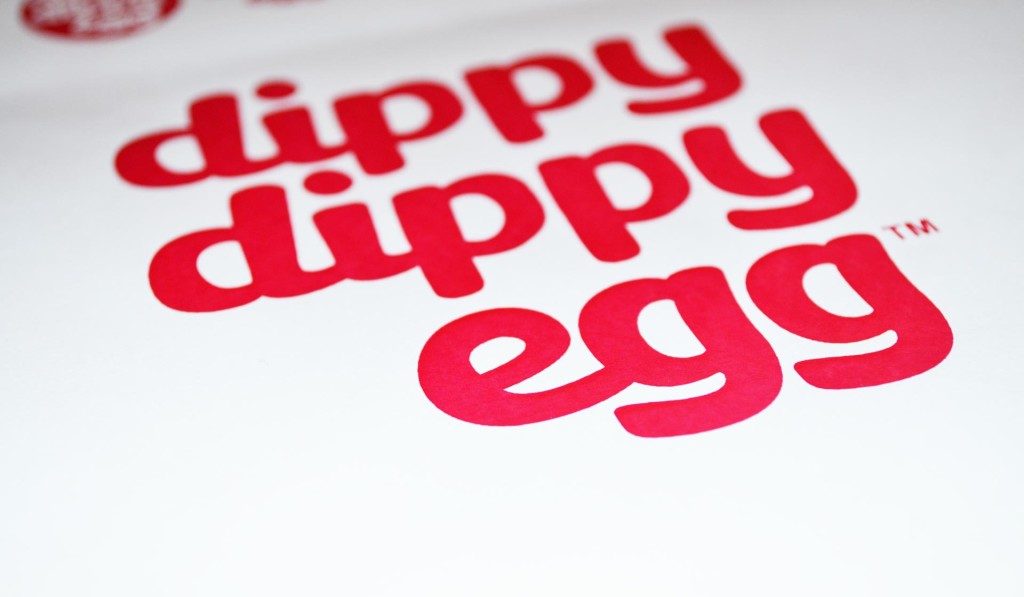
How much typography knowledge do you need to have, in order to create a hand lettering logo? (I’m asking because I’m looking into learning this, myself) 🙂
You know what? I didn’t have a lot of hand rendered typography experience. I still don’t. It’s something I am keen to work on more. There are some great, great, great artists / designers that can create beautiful hand lettering and it is a proper skill, it is an artform and I am very envious of them. I imagine that they have put in hours and hours and hours of practice to perfect this admirable skill. People like Jessica Hische are leaders in this field.
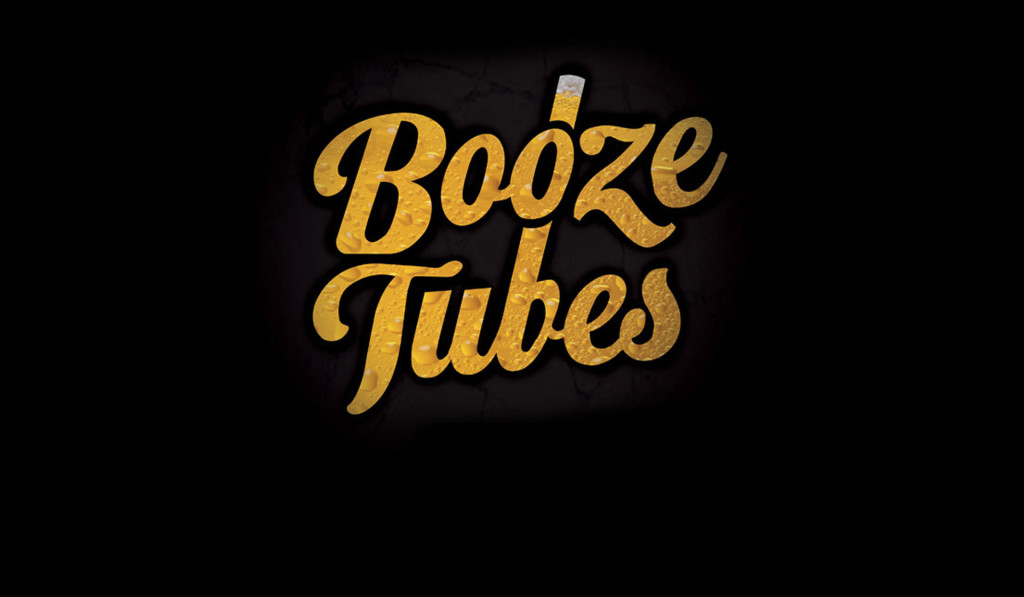
If there’s anything unclear in the creative brief, you must ask questions until everything is crystal clear
When creating visual identities, what are the key steps you need to make sure you take, in order to do the best possible job? (including pitching for such a project).
I think that a key step is to know the company inside out. What it stands for, what it’s ‘personality’ is, what it aspires to be, who the target audience are, what aspirations the target audience have. You must spend time with the business owners or managers to ensure that you create and both agree on an excellent creative brief. (If there’s anything unclear in the creative brief, you must ask questions until everything is crystal clear). I think that this is your first step.
After you have a solid, understandable and inspiring creative brief, research is your friend. Research the audience, research the local area where the business is, research the competitors and research the industry. Look for what works well, and also pinpoint what isn’t working well and how you can change that. Interview employees, interview potential clients, interview locals. Remember to record your findings as you will one day have to present your research to your client.
After you have a solid, understandable and inspiring creative brief, research. Interview employees, interview potential clients, interview locals
Another important step, which is often scandalously overlooked, is think about the future of this brand. Remember, when creating visual identities for your client, think not only about the end result (be it a website, a logo, and marketing collateral), but also think about creating a solid and well presented brand guidelines book. This book should be the visual identity bible for that client, it should include technical information about what fonts (include stroke weights and sizes) the brand uses, as well as what primary and secondary colours (hex codes, RGB, CMYK and pantones) the brand uses etc etc. The brand guidelines book should also include information on the brand’s personality, rules on how various elements work together, for example how and when to use the logo with the tagline, when and which fonts can be bold etc etc. It should serve as an in depth guide that documents all information that is relevant to the brand and visual identity that you created. You client will appreciate this.
Another important thing, which isn’t a step, but an overall consideration – time and care. You are creating a visual identity for a brand. Yes, you are getting paid for it, but you shouldn’t see it as a job. You should see it as an honour. An honour that you are trusted to create and organizations look and feel. You should always remain professional, and always try to make informed and educated design decisions, you should treat the business that you are creating a visual identity for as if it was your own. Don’t cut corners. And aim to create a visual identity that will get people talking.
You must also be strong in your opinions, and back them up with detailed and compelling justification. Don’t get to the stage where the client is dictating everything and you are just doing it to make the client happy. Be passionate about your decisions and articulate why you think the brand would benefit from looking and feeling a certain way. Remember you are the expert in the design field – thats why the client hired you, so be act like the expert.
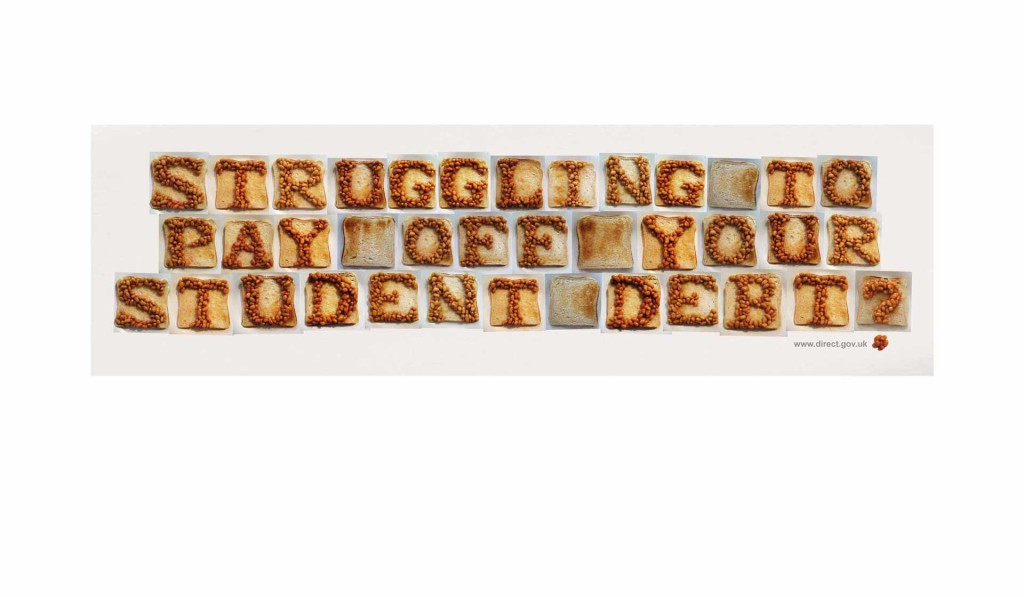
You are creating a visual identity for a brand. Don’t cut corners. And aim to create a visual identity that will get people talking
You are currently a Senior Designer at MuleSoft. What are the biggest challenges you face on this job?
I’ve been at MuleSoft for almost 3 years now. I started working for them as a graphic designer whilst living in Buenos Aires, before recently getting transferred to their head office in San Francisco to be their lead designer. It’s been, and continues to be a great experience. MuleSoft is a tech startup, that does software and application integration – which admittedly isn’t the sexiest or most interesting subject you could talk about whilst on a dinner date, however that’s the beauty and challenge of my job as their lead designer – to make software integration sexy, interesting and appealing to both a wide and narrow target audience. As their lead designer I have to make sure that we are making the complicated technical stuff look simple, understandable and digestible, yet still look robust and trustworthy.
Another challenge is dealing with the many passionate opinions or ‘cooks in the kitchen’. We have a vast marketing team, all of which care for the company and subsequently have strong opinions on design and how we look to the outside work, we regularly present our work, and get great feedback from the marketing team and beyond, however occasionally one piece of feedback contradicts another, a challenge is knowing which piece of feedback is the right call. Luckily for me and rest of the creative team, we work with really great and level headed Art Directors like Michael Hindman and Veronika Kainz – working with great people can make any challenge, or hurdle easier to surpass.
Whilst most normal people have lots of photos of night out with friends, nice moments with the girlfriend etc, mine is full of photos of nice lettering, beer bottle labels, nice packaging, interesting typogaphy and other random bits and pieces of design that I come across and admire
What do you wish to do in the future, professionally, that you haven’t done yet?
I have a number of passion or dream projects in my head that I would LOVE to work on. As a designer I walk around which ever city, town, street, or supermarket that I am in, and I analyze in my mind each and every piece of graphic design that I see. In my mind I look to see what could be improved as well as what designs have been done well, and what designs haven’t been done so well. I also imagine in my little head, what kind of designer worked on the projects or pieces of graphic design that I stumble across. You can always spot a lazy designer. I take lots of photos on my phone, and whilst most normal people have lots of photos of night out with friends, nice moments with the girlfriend etc, etc, mine is full of photos of nice lettering, beer bottle labels, nice packaging, interesting typogaphy and other random bits and pieces of design that I come across and admire.
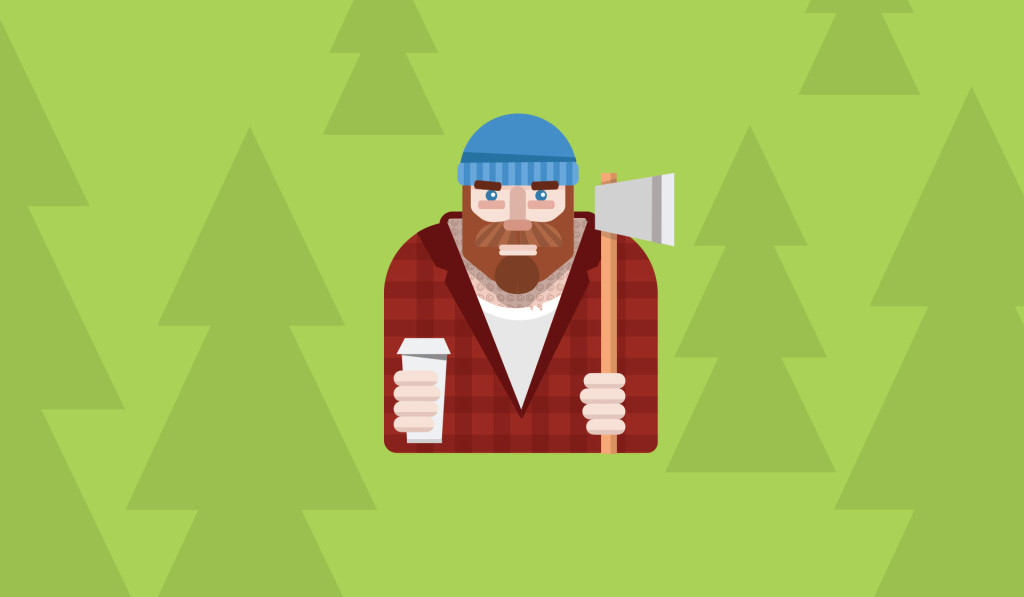
You can always spot a lazy designer
In my ‘little graphic design dream world’, I occasionally think, I would have loved to have worked on that project, or I would have loved redesign that logo or that design.
My lifetime’s ambition would be to design a logo for a professional football (Soccer) team. I am a huge football fan, and I would love to combine my two passions – Football and Graphic Design to create something that passionate fans would adore. It would be such an honour the create something that represents a football club and their fans, something that player would wear with pride and fans would adore.
It is also an ambition of mine to create beer bottle labels. I think theres an art to creating a memorable beer bottle labels.
It’s amazing to think that you can visually say so much about a beer or the company behind the beer in just the 5 cm by 10 cm that they allow you. It annoys me when I see boring, or poorly design beer labels – I always think ‘I could have made that label more memorable’.
There’s so much that I want to do in the future. Other passion or dream projects include restaurant identity – I love the idea of walking into a restaurant that I have creatively influenced. I’d also like to design wine bottle labels and I also wanted to have my own t-shirt label, designing and selling high quality cool and edgy t-shirts.
Starting any venture is super exciting, I’ve love every minute of it
You recently started your own project, Desinion. Is this your first entrepreneurial venture? What has been your experience, so far?
I think most designers or illustrators, especially the good ones, have an natural entrepreneurial spirit. I am no different. I had the idea for Desinion rolling around in my brain for a good 3 months before I started design and development. I was sure that it would be valuable to the industry and offer something that isn’t already out there.
We launched Desinion just under 2 months ago and so far it has been an overwhelming and exciting success. Some very big design magazines, blogs and respected designers and illustrators from various countries have picked up on the potential and value that if offers to designers, illustrators and art directors, and have written and published some very positive pieces about Desinion.
Starting any venture is super exciting, I’ve love every minute of it. I’m no business expert, far from it. However I think what has helped me in the particular venture is that I am the target audience – I am a designer and have been for a long time, and like to think that I know how the good designers think, and what they need and what could make their lives and design processes easier, both in the development of designs and pitching to clients – I think that Desinion does offer something different, and useful to designers and illustrators. What also helps is that I want to do this for the good of the industry and the designer / illustrator, its not about making money, its about making something cool, that people gain value from and get excited about using.
If you had to guide someone new to graphic design, who wants to learn, what would you insist they do? (you can also include resources here, anything you feel is relevant)
There’s so many things. One important thing is when you are actually in the beautiful midsts of creating your designs for a client, you should question everything you do, every move you make. Try to justify every design decision, and make sure that your design decisions line up with what the creative brief asks for. For example: Ask yourself, why am I making that stroke 3px instead of 1px? Why am I choosing this font, over that font?, make sure that you are able to articulate and validate to yourself why you made the decisions that you made – at first this will be annoying and taxing on the brain, but it will help you become a better and more thoughtful designer. It will also help you when you have to present your designs to your clients. I used to design in a very visual manner, making design decisions based solely on aesthetics, which was fine up until a point, however when you are in front of a client, you have to justify your decisions, and the common line – ‘because i thought it looked good’ doesn’t cut it.
I would say experience over education. I would suggest to anyone (that wants to listen to me) that getting actual studio experience is worth a lot more than doing a university course. University has its merits, such as allowing you to dabble in different creative mediums, however the amount of hands-on knowledge, info about technical and creative processes and experience that you get from working 8-10 hours in a design studio per day is an unbelieveable learning curve. I would say that the tougher and more professional studio that you work, or volunteer / intern at, the better. Yes you may have a few uncomfortable design critique sessions, however all of this will put you in good stead in the future.
I would also say – stay creative outside of work. I was once at work, waiting in line to get some food, and a friend and our copywriter asked me, ‘Chris, what do you do when you are at home and you are not at work?’, I replied with – ‘It’ll sound sad and nerdy to you, but I design things’. And I do. I stay creative outside of work by designing things. Things that I want to design, I become my own designer and client. It’s not laborious, nor forced, its extremely enjoyable and fun. I still find time to have a good few beers with my mates, and go out and do some cool stuff, however designing and being creative is my job, hobby and passion all rolled into one. I would recommend that anyone wanting to get into graphic design does the same – stay creative, and enjoy what you do.
